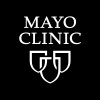Sorafenib and Letrozole, Anastrozole, or Exemestane in Treating Postmenopausal Women With Estrogen Receptor-Positive and/or Progesterone Receptor-Positive Metastatic Breast Cancer
Breast Cancer

About this trial
This is an interventional treatment trial for Breast Cancer focused on measuring stage IV breast cancer, recurrent breast cancer
Eligibility Criteria
DISEASE CHARACTERISTICS:
Histologically or cytologically confirmed adenocarcinoma of the breast
- Metastatic disease
Measurable disease, defined as ≥ 1 unidimensionally measurable lesion ≥ 20 mm by conventional techniques (i.e., MRI or CT scan of chest, abdomen and pelvis) or ≥ 10 mm by spiral CT scan
- Non-measurable disease allowed, defined as all other lesions (or sites of disease), including small lesions (longest diameter < 20 mm by conventional techniques or < 10 mm by spiral CT scan)
- Must have objective evidence of progression within the past 3 months
- No human epidermal growth factor receptor 2 (HER2)/neu overexpression, defined as gene amplification by fluorescence in situ hybridization or 3+ overexpression by immunohistochemistry, or unknown HER2/neu status
No active brain metastases
- Patients with neurological symptoms must undergo a contrast CT scan or MRI of the brain to exclude active brain metastasis
- Patients with treated brain metastases allowed provided they have no evidence of disease and have been off definitive therapy (including steroids) for the past 3 months
Hormone receptor status:
- Estrogen receptor- and/or progesterone receptor-positive disease
PATIENT CHARACTERISTICS:
- Female
- The Eastern Cooperative Oncology Group (ECOG) performance status 0-1
- Postmenopausal
- Hemoglobin ≥ 9.0 g/dL
- ANC ≥ 1,500/mm³
- Platelet count ≥ 100,000/mm³
- Total bilirubin ≤ 1.5 times upper limit of normal (ULN)
- ALT and AST ≤ 2.5 times ULN (≤ 5 times ULN for patients with liver involvement)
- INR ≤ 1.5
- PTT within normal limits
- Creatinine ≤ 1.5 times ULN
- Not nursing, pregnant, or able to become pregnant
- No significant traumatic injury within the past 4 weeks
- No history of bleeding diathesis or uncontrolled coagulopathy
- No serious, nonhealing wound, ulcer, or bone fracture
No clinically significant cardiac disease, including any of the following:
- New York Heart Association class III-IV congestive heart failure
- Unstable angina (i.e., anginal symptoms at rest) or new-onset angina (i.e., began within the past 3 months)
- Myocardial infarction within the past 6 months
- No cardiac ventricular arrhythmias requiring antiarrhythmic therapy
- No uncontrolled hypertension (systolic BP > 150 mm Hg or diastolic BP > 90 mm Hg), despite optimal medical management
- No thrombolic, embolic, venous, or arterial events (e.g., cerebrovascular accident including transient ischemic attacks) within the past 6 months
- No pulmonary hemorrhage or bleeding event > grade 2 within the past 4 weeks
- No other hemorrhage or bleeding event ≥ grade 3 within the past 4 weeks
- No active clinically serious infection > grade 2
- No known HIV infection
- No chronic hepatitis B or C infection
- No previous or concurrent cancer that is distinct in primary site or histology from breast cancer except carcinoma in situ of the cervix, treated basal cell skin cancer, superficial bladder tumors (i.e., Ta and Tis), or any cancer curatively treated within the past 5 years
- No known or suspected allergy to sorafenib tosylate or other agents used in this study
PRIOR CONCURRENT THERAPY:
- See Disease Characteristics
- No major surgery or open biopsy within the past 4 weeks
- No more than 1 prior regimen of endocrine therapy for metastatic breast cancer, provided that the patient has not received an aromatase inhibitor within the past 12 months
- No more than 1 prior regimen of chemotherapy for metastatic disease
More than 2 weeks since prior radiotherapy, except if to a non-target lesion only or single-dose radiotherapy for palliation
- Prior radiotherapy to a target lesion(s) is permitted only if there has been clear progression of the lesion since radiotherapy was completed
- Concurrent anticoagulation treatment (e.g., warfarin or heparin) allowed
- No concurrent Hypericum perforatum (St. John's wort), rifampin, bevacizumab, or any other drugs (licensed or investigational) that target vascular endothelial growth factor (VEGF) or VEGF receptors
- No concurrent cytochrome P450 enzyme-inducing anti-epileptic drugs (e.g., phenytoin, carbamazepine, or phenobarbital)
Sites / Locations
- Mayo Clinic in Arizona
- Mayo Clinic in Florida
- Mayo Clinic
Arms of the Study
Arm 1
Arm 2
Experimental
Active Comparator
Arm I
Arm II
Patients receive oral sorafenib tosylate twice daily and oral letrozole, anastrozole, or exemestane once daily on days 1-28. Treatment repeats every 28 days in the absence of disease progression or unacceptable toxicity.
Patients receive oral placebo twice daily and oral letrozole, anastrozole, or exemestane once daily on days 1-28. Treatment repeats every 28 days in the absence of disease progression or unacceptable toxicity.
Outcomes
Primary Outcome Measures
Secondary Outcome Measures
Full Information
1. Study Identification
2. Study Status
3. Sponsor/Collaborators
4. Oversight
5. Study Description
6. Conditions and Keywords
7. Study Design
8. Arms, Groups, and Interventions
10. Eligibility
12. IPD Sharing Statement
Learn more about this trial
